The Von Schweikert UniField 3 Loudspeaker
| The Von Schweikert UniField 3 Loudspeaker |
| On The Move…Literally |
|
|
|
November 2009 |
I remember my first exposure to a Von Schweikert Audio (VSA) loudspeaker occurring at an Home Electronics show in San Francisco in the late 90s. The first thing that struck me about this gargantuan loudspeaker (I believe the model VR-8 playing at the time in a room way too small) was the un-appealing exterior which was covered with a gray colored material similar to the material used in pro audio (maybe reflecting Albert Von Schweikert’s rock guitarist roots?). The VR8s were also BIG and set up in modular fashion, with the modules enlarging from top to bottom. Yeah, on a scale of 1 through 10, the WAF (Wife Acceptance Factor) was a -5 unless you had a dedicated listening room. However, I also remembered this moderate sized room being packed and a long line of eager show-goers snaked outside the room. Each person, I remember, remained amazingly quiet and focused only on the incredibly life-like sound being produced, with absolutely no talking during and for a few seconds after a primarily vocal/guitar piece was played (which I believe was Stevie Ray Vaughn’s Tin Pan Alley). The fact that these huge loudspeakers commanded the rapt attention of those of us in the room and forced us to consider the whole of the performance, and not have our attention drawn to its rather crude appearance, or how well the bass integrated or how wide the sound-stage was made a lasting impression on me.
Since that time, the WAF of the VSA line has improved exponentially and I was inclined to purchase a pair. I wanted to choose a model appropriate for my room size (which was smaller at that time), and the VR4-jr anniversary seemed to fit my room the best (along with the fabulous price/performance ratio). But wait, I got word of a new model just going into production that was intended for small to moderate sized rooms that gave superior performance, comparable to the VR5 SE. Needless to say, I was sold especially after learning of the “augmented one-way “ design of the loudspeaker. The UniField 3s actually uses a 5’’ full-range driver “augmented” by a ribbon tweeter and a separate woofer module. This “augmented one-way “ concept seemed rather simple when described, so I was rather surprised that very few manufacturers have offered designs such as this. I have always been enamored with the single driver speakers, but I have to have full range sound, with deep, powerful bass combined with shimmering highs. I also love the sound of the Quads and Martin Logan electrostatic speakers, but I miss the bass and treble extension of other models.
For description and technical information, I went to the source, Albert Von Schweikert. He quotes: “the goal of any loudspeaker design is to accurately reproduce what is on the recording, which was made with microphones. Since microphones can be thought of as encoders, with their own sound and personality that affects the music, it is correct to surmise that an accurate loudspeaker system should mimic the microphone, but in reverse. Since the recording mics are single diaphragms that pick up frequencies in the audible frequency range, the loudspeaker should mimic this characteristic if you wish to hear the correct spatial dimensionality on the recording.” Whoa…never heard that before , but it seems to make a lot of sense as I understand the analog-to digital conversion process – an encode and decode proposition that is familiar to all of us.
Looking at the top cabinet, what appears to be a 5” midrange driver is actually a full-range driver, with a frequency range of 85 to 15,000 Hz according to VSA. Von Schweikert felt it would be sonically advantageous to find the best single driver available and then flesh out the deep bass and high treble with “augmentation” drivers. In this way, he could design a very coherent and high speed system closer to the sound of a single diaphragm recording mic. After testing most of the available off-the-shelf drivers from Fostex of Japan, Lowther of England, and Aursound of California, I was told that he chose a Japanese 5” full-range modified to fit his goal.
According to the driver manufacturer, the cone is fabricated from a complex blend of organic plant fibers, cellulose acetate pulp, ceramic liquid, and glass microspheres. The cone is unique in that it has a coating of tiny glass beads applied with the ceramic coating. In the center is a small aluminum dust cap, used to reproduce upper frequencies to 15 kHz by serving as a tweeter diaphragm attached to the full range’s voice coil. I can see the quality by just looking at this speaker unit.
The bottom cabinet contains a 180mm magnesium woofer which handles the deep bass and acts as a stand for the full range speaker. VSA claims that the woofer is flat to 32 Hz, which is hard to believe from such a small cabinet. According to Von Schweikert, the woofer has a very high power handling due to the long throw design and what he calls a “Low Distortion Motor,” which is patented by the manufacturer. The cabinet has a front-loaded port, with four separate chambers created by internal shelf braces. These chambers are all filled with Dacron stuffing, which absorbs unwanted cavity resonances which makes “bass reflex” designs sound boomy. In comparison, the stuffed chambers act as mid-bass filters, eliminating the common “one note” bass common to ported boxes of simpler design. During a demo of some pipe organ music, I could feel the room being pressured at what felt like amazingly low frequencies. The bass was very deep, loud and undistorted, filling the hotel room. Just as impressive was the tightness and coherence to the midrange: there was no boom in the room.
Von Schweikert blended in a 3” ribbon super tweeter to cover above 8,000 Hz, where the treble becomes a bit weak in the full range loudspeakers; with a response up to 50 kHz. Von Schweikert says the circuit is pretty simple, using just a very high quality Teflon capacitor to block midrange from the ribbon. As I mention later, the crossover point was seamless, with the ribbon tweeter giving more air and shimmer on cymbals. Please visit the VSA web site for more info on the innovative cabinet technology and the solution Von Schweikert engineered to control the loudspeakers cone vibration from being transmitted through the front baffle. Fascinating to see the research and engineering that went into this loudspeakers. My UniField 3s’ are high gloss black and are beautifully finished, fitting in my listening space perfectly.
My associated equipment; Lamm’s LL2 preamplifier and ML2.1 amplifier; a modified Marantz SA11s1 SACD player; a Bel Canto Dac 3 (modified); and Lyngdorf RP-1 for room correction. Accessories include a set of Argent Room Lenses and Franck Tchang’s Acoustic Resonators.
My set-up occurred in two locations due to a recent move into a new and more spacious home (from a townhouse). The dimensions of my room in the townhouse were rather small at 13′ x 14′ x 8′ and in the house 28′ x 18′ x 11′. The UniField 3’s were set up with the woofers 36 inches from the front wall, 24 inches from the sidewalls and 6 ½ feet apart in the townhome; and are currently 63″ from the front wall, 48″ from the sidewalls and 8′ apart in the house. My sweet-spot in the townhome was 7-feet away from the loudspeakers and now 12-feet in my current setup.
In the describing the sound of the UniField 3s, particularly with more breathing space in my larger room, the soundstage is as coherent as I’ve heard in this price range and above from top to bottom. Again, the design is a success at blending the woofer and the ribbon tweeter with the midrange driver, with no audible transition. The bass, midrange and highs all sound like a single source. I was astonished at the deep, fast and tight bass from this rather diminutive transducer. What really sets the UniField 3s apart was their ability to adapt to my room by way of their amazingly flexibility. The UniField 3s provided this listener with what was on the recording unlike I’ve heard in my listening space. I immediately realized just how good the Lamm gear is in my home system.
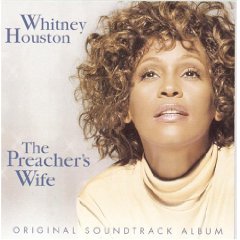 More specifically, the soundstage is noticeably more shimmery on the Preacher’s Wife soundtrack with Whitney Houston singing in front of a mass choir on “I go to the Rock.” The voices of the mass choir behind her are distinct and layered and the UniField 3s portrayed this with a sense of realism unlike before.
More specifically, the soundstage is noticeably more shimmery on the Preacher’s Wife soundtrack with Whitney Houston singing in front of a mass choir on “I go to the Rock.” The voices of the mass choir behind her are distinct and layered and the UniField 3s portrayed this with a sense of realism unlike before.
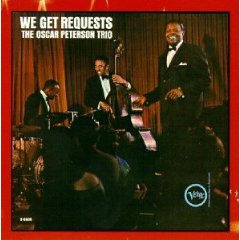 The sound and timbre of the instruments are spot on listening to the Oscar Peterson trio on the We Get Requests CD. On the “People” track, Ray Brown’s bass/Ed Thigpen’s brushwork on the skins and cymbals, and Oscar’s delicate switch from chord changes to right hand solos; all in the context of subtle dynamic swings are served up as they are recorded. No highlighting of any instrument and staying true to the recording.
The sound and timbre of the instruments are spot on listening to the Oscar Peterson trio on the We Get Requests CD. On the “People” track, Ray Brown’s bass/Ed Thigpen’s brushwork on the skins and cymbals, and Oscar’s delicate switch from chord changes to right hand solos; all in the context of subtle dynamic swings are served up as they are recorded. No highlighting of any instrument and staying true to the recording.
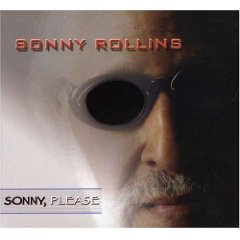 Speaking of staying true to the recording, on the Sonny Rollins CD, entitled Sonny Please (which is also the name of the song), this particular track shows how true these transducers are to the recording by letting you feel the energy of the recording venue in addition to all the subtle exchanges between the musicians. You feel where they are going during this intense recording session. You appreciate the beautifully vintage playing of Rollins with that gorgeous tone: powerful and delicate at the same time.
Speaking of staying true to the recording, on the Sonny Rollins CD, entitled Sonny Please (which is also the name of the song), this particular track shows how true these transducers are to the recording by letting you feel the energy of the recording venue in addition to all the subtle exchanges between the musicians. You feel where they are going during this intense recording session. You appreciate the beautifully vintage playing of Rollins with that gorgeous tone: powerful and delicate at the same time.
Like-wise, Lara St. John’s tone on the violin playing on Vivaldi “The Four Seasons” SACD is so true to life, it stirs the emotion. The UniField 3s truly give you the proverbial window to the recording session. That’s all you can ask of a great loudspeaker.
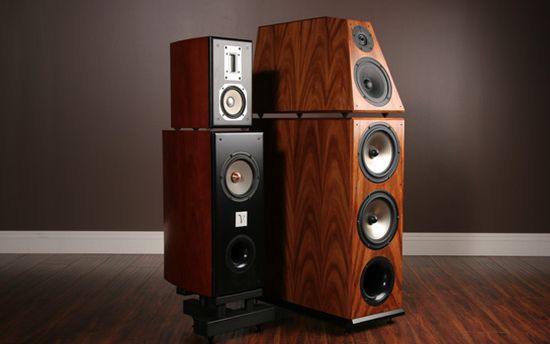
Comparisons? I have auditioned many other high-end loudspeakers at various price ranges, but due to all the variables of differing front end equipment I will stick with the VSA line that I have heard also using the Lamm ML 2.1’s or similarly excellent equipment. Are the UniField 3s sonically as good as the VR 9 SE? No. They do give you a large measure of the VR 9’s and the difference is more one of scale. The VR 9’s do everything the UniField do, except “better.” Are the UniField 3’s as good as the VR 5 SEs? Yes and No. The VR 5 SE’s give more body which I believe is due to the bigger low-end section used for the VR 5s. However, I believe that unique quality I hear mentioned about the VR 5 SE’s that transports the listener and gives you the feeling you’re in the recording is equaled by the UniField 3’s.
Lastly, the UniField 3s are sooo tweakable. Better stands give better results. Also, isolating the top module effectively makes for more soundstage clarity. The best so far at isolation I have found are the Nordost pulsar points. Hope this helps some of you who are looking in this price range and above. Value? I would prefer this loudspeaker over all in it’s price range and most above it up to $30K (most, because I have not heard them all).

![]()
Specifications:
Von Schweikert Audio UniField 3 Loudspeakers
Warranty: Ten years parts and labor.
Price: $15,000 USD per pair.
Website: www.Vonschweikert.com
E-mail: Albert@VonSchweikert.com
Address: Von Schweikert Audio Corp.
41110 Sandalwood Circle
Unit 122
Murrieta, CA 92562
Phone: 951/ 696-3662
![]()
Don’t forget to bookmark us! (CTRL-SHFT-D)
Stereo Times Masthead
Publisher/Founder
Clement Perry
Editor
Dave Thomas
Senior Editors
Frank Alles, Mike Girardi, Key Kim, Russell Lichter, Terry London, Moreno Mitchell, Paul Szabady, Bill Wells, Mike Wright, Stephen Yan, and Rob Dockery
Current Contributors
David Abramson, Tim Barrall, Dave Allison, Ron Cook, Lewis Dardick, Dan Secula, Don Shaulis, Greg Simmons, Eric Teh, Greg Voth, Richard Willie, Ed Van Winkle, and Rob Dockery
Music Reviewers:
Carlos Sanchez, John Jonczyk, John Sprung and Russell Lichter
Site Management Clement Perry
Ad Designer: Martin Perry


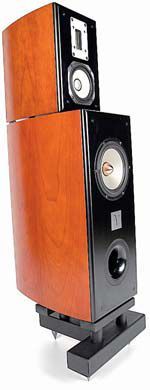



Be the first to comment on: The Von Schweikert UniField 3 Loudspeaker